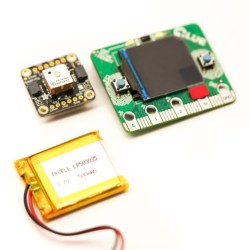
[Jay Doscher] shares a quick GPS project he designed and completed over a weekend. The device is called the CLUE Tracker and has simple goals: it shows a user their current location, but also provides a compass heading and distance to a target point. The idea is a little like geocaching, in that a user is pointed to a destination but must find their own way there. There’s a 3D printed enclosure, and as a bonus, there is no soldering required.
The CLUE Tracker uses the Adafruit CLUE board (which is the same size as the BBC micro:bit) and Stemma GPS sensor, with the only other active component being a lithium polymer battery. The software side of the CLUE Tracker uses CircuitPython, and [Jay] has the code and enclosure design available on GitHub.
[Jay] did a nice job of commenting and documenting the code, so this could make a great introductory CircuitPython project. No soldering is required, which makes it a little easier to re-use the parts in other projects later. This helps to offset costs for hackers on a budget.
The fact that a device like this can be an afternoon or weekend project is a testament to the fact that times have never been better for hobbyists when it comes to hardware. CircuitPython is also a fast-growing tool, and projects like this can help make it easy and fun to get started.
















Hard Mode: https://imgs.xkcd.com/comics/cheap_gps.png
Needs to have a built-in head smacker so the CLUE will be more impressionable.